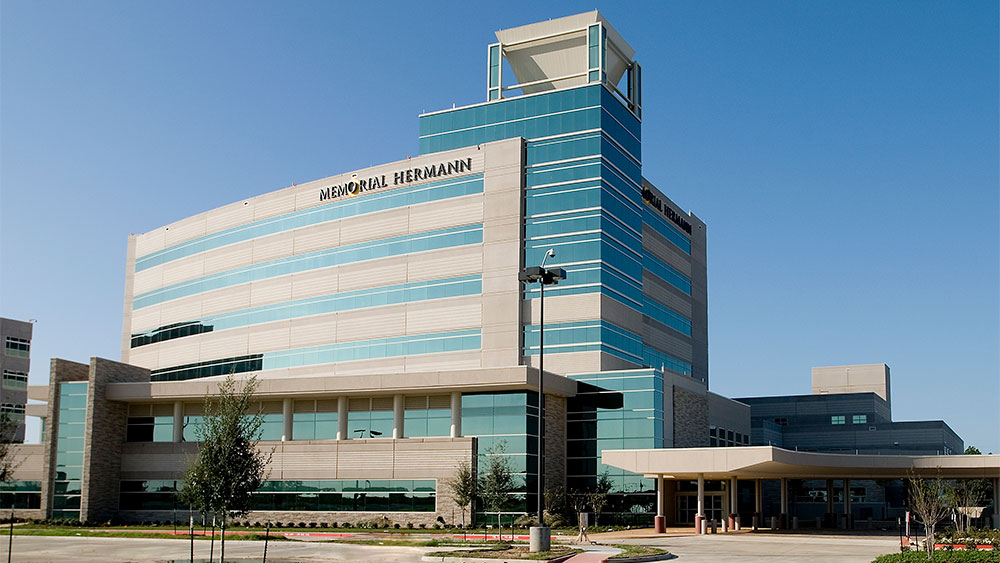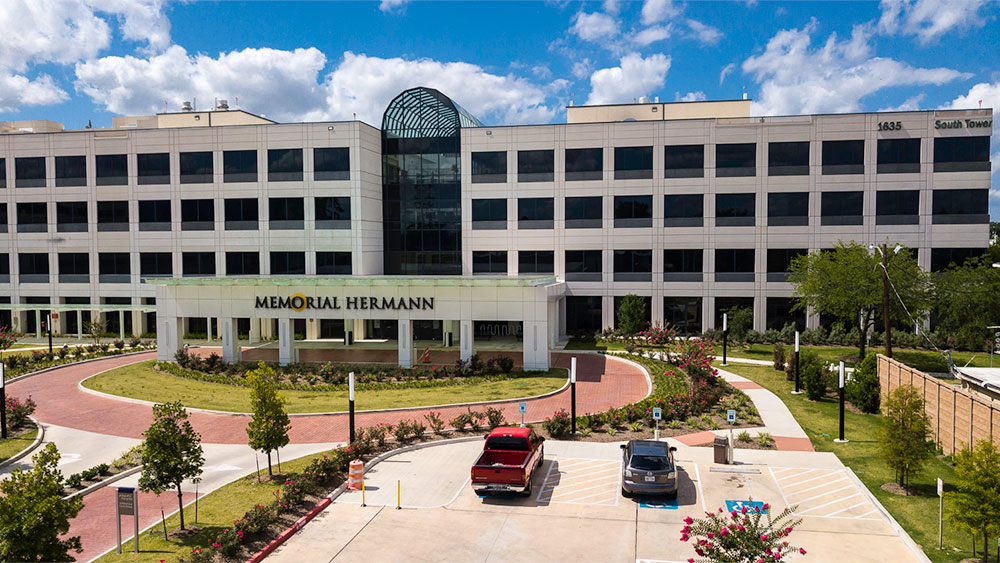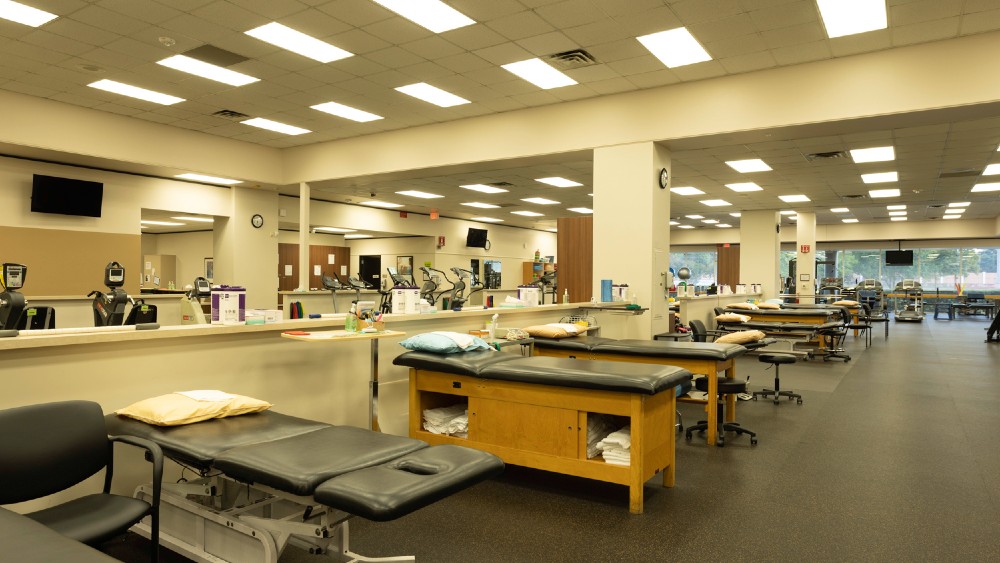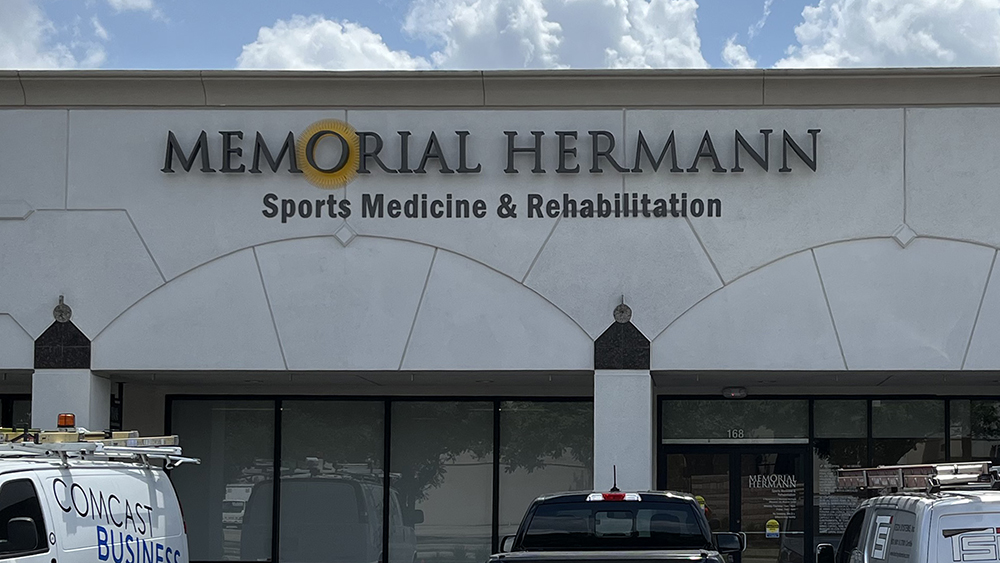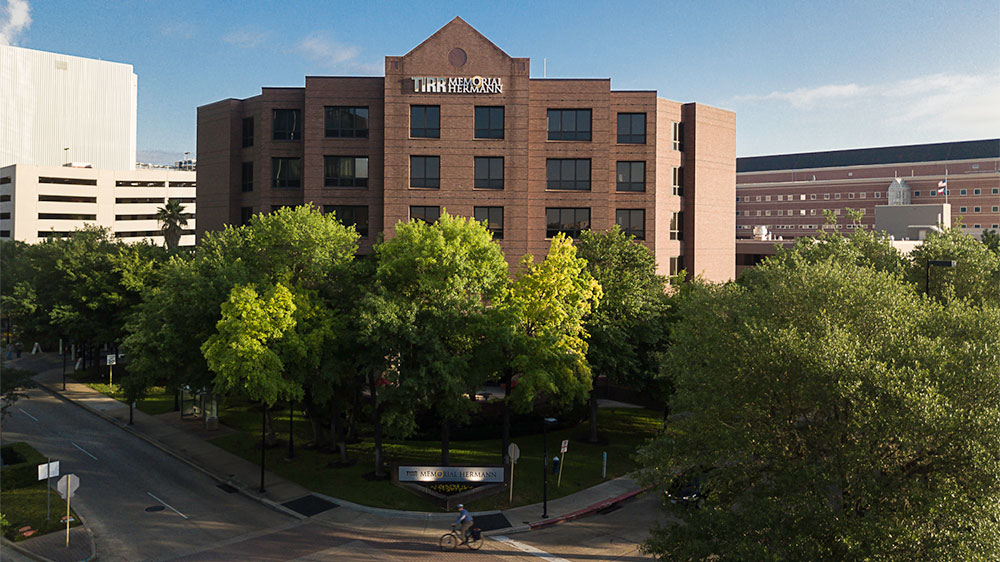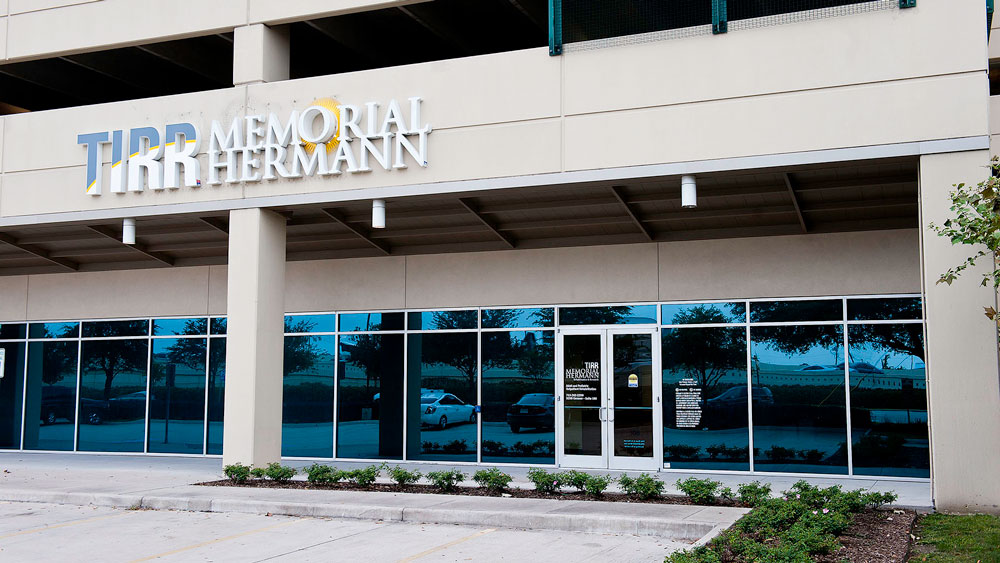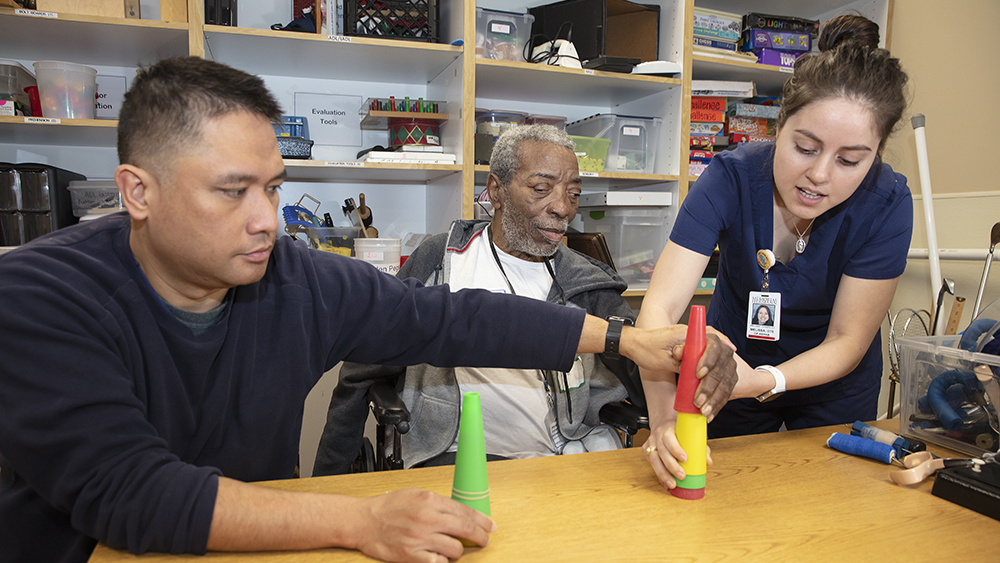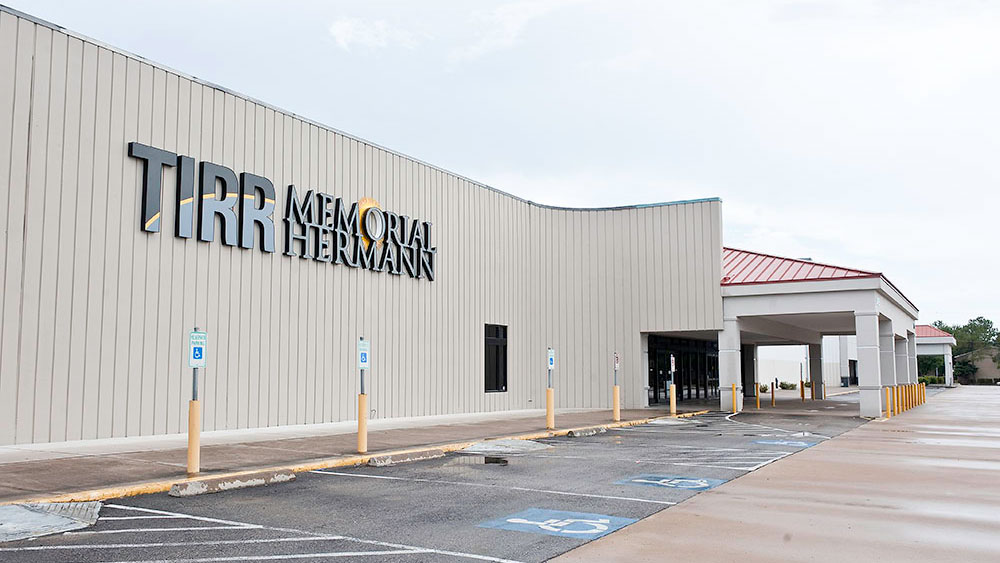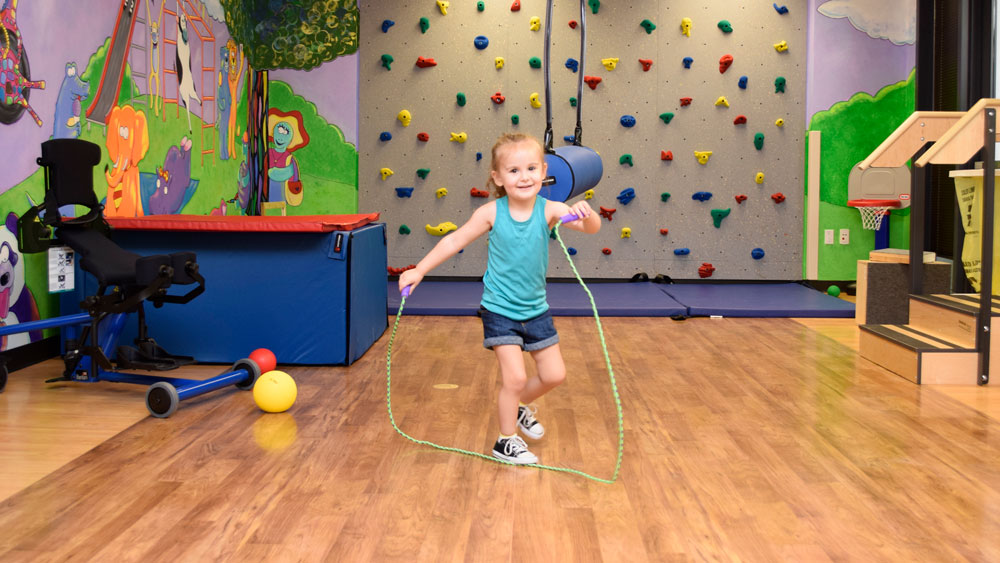Aquatic therapy uses the physical properties of water, including buoyancy and resistance, to aid in rehabilitation and healing. Buoyancy reduces stress on the joints and injured soft tissues, while resistance allows for strengthening of specific muscle groups.
The unique physical properties of water make it an ideal and comfortable medium in which to challenge all levels of strength, especially when joints are injured and movement is difficult. When used as part of an individualized treatment program, aquatic therapy allows for functional movement earlier in the therapeutic program by reducing the effects of weight bearing on joints by up to 80%. In addition, our Memorial Hermann aquatic therapists also provide advice on how to continue aquatic therapy at home or at a local pool.
Who Aquatic Therapy Benefits
Aquatic therapy can be performed by a physical or occupational therapist and is tailored to the individual needs of the patient and can be in combination with land therapy and aquatics or aquatics alone. Both pediatrics and adults would benefit from aquatic therapy. Aquatic therapy can provide benefits to patients recovering from a broad range of musculoskeletal and neurological problems, including:
- General debility
- Sprains and strains
- Tendon and ligament injuries
- Fractures
- Joint replacements
- Stroke and other neurological disorders
- Loss of strength or mobility
- Muscle spasms and pain
- Pain and weakness, including back pain
- Orthopedic injuries
- Rheumatoid arthritis
- Osteoarthritis
- Fibromyalgia
- Sensory disorders
- Range of motion disorders
- Spasticity
- Perceptual and spatial problems
- Balance deficits
- Weight bearing restrictions after surgery
- Swelling
- Changes in muscle tone
- Impairments with walking, sitting, or balance standing
How Aquatic Therapy Works
Aquatic therapy combines traditional exercise with the water's buoyancy to enhance and accelerate the rehabilitation process. The pool is kept at a therapeutic 92 degrees and is accessible by stairs or chair lift. Aquatic therapy utilizes the unique properties of water such as:
- Buoyancy - buoyancy counteracts the downward pull of gravity, giving the patient a sense of weight loss
- Reduces Stress, Impact, and Friction Between Joints - water exercise reduces the stress, impact and friction between the joints and injured soft tissue or bone, allowing performance of exercises and activities that are intolerable in a land-based program
- Support and Stability for Muscles and Joints - by varying the patient's orientation or direction of motion, therapists can help patients utilize water for support with increasing range of motion, as well as for resistance and strengthening of specific muscle groups
- Supportive Environment - water provides a supportive environment to assist with postural awareness, ROM and ambulation
- Resistance - through turbulence created by movement in the water, the trunk and extremities experience sensory input that assists with muscle recruitment and overall stability of the joints throughout the body
- Hydrostatic Pressure - hydrostatic pressure is the force exerted on the body by water. This, in turn, helps decrease pain, which in turn increases range of motion.
- Warmth - the warm water used in our pools helps stimulate blood flow and muscle movement.
These properties help our patients work toward functional independence or their functional therapy goals.
Goals of Aquatic Therapy
Common goals which can be addressed in the water include:
- Increased balance
- Strengthening
- Pain reduction
- Increased independence with gait and transfers
- Home exercise instruction
- Spasticity reduction
- Increased flexibility
- Improve tolerance to sitting and standing
Where to Get Aquatic Therapy
Both TIRR Memorial Hermann and Memorial Hermann Sports Medicine and Rehabilitation facilities offer aquatic therapy.
See below for the Memorial Hermann locations that offer these services.
Ready for Relief?
If you’re interested in finding relief through physical or occupational therapy, the therapists at Memorial Hermann Sports Medicine & Rehabilitation are here to help. Request an initial evaluation appointment by filling out the form below or calling (713) 521-0020 or (888) 301-8477.
